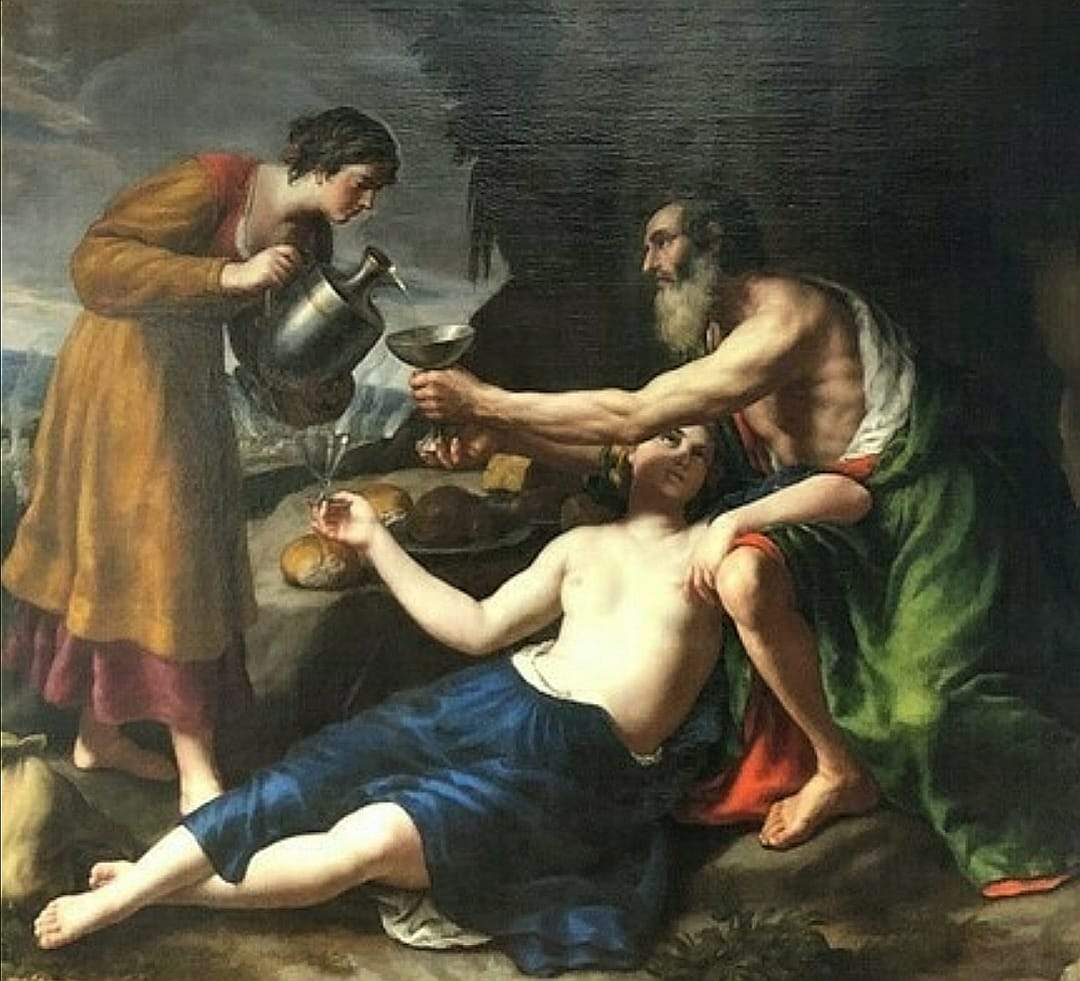Let's give Turchi what is Turchi's. His and not Poussin's the painting recovered by Carabinieri.
Whose painting with the subject Lot and his daughters that was recovered by the Carabinieri in Monza last April 1, and which the Carabinieri, in communiqués, conveyed as a work “by Nicolas Poussin”? It is actually a painting by Alessandro Turchi known as l’Orbetto (Verona, 1578 - Rome, 1649), well known to scholars. The work was actually attributed to Poussin in the past, but it is such an old and implausible attribution that it has not even been considered in more recent catalogs. The work belonged to a Jewish family residing in Poitiers, France: after their arrest and deportation to the Nazi camps, the furnishings and works in their home were sent to Germany, and after the war the family tried to regain possession of the work, but they had lost track of it.
Carabinieri found it in a private collection in Padua, where it had ended up after several passes through auctions. The painting, meanwhile, has also been exhibited on important occasions: most recently at TEFAF in Maastricht and, in 1999, at the major exhibition on Alessandro Turchi held in his hometown of Verona. On that very occasion, curator Daniela Scaglietti Kelescian published a detailed fact sheet on the painting, identifying it as one of five works by Alessandro Turchi that, in the 19th century, were in the possession of Count Teodoro Lechi of Brescia. The paintings were once owned by the Gherardini family of Verona, major patrons of Alessandro Turchi, who supported him before he moved to Verona. In the will of a member of the family, Gaspare Gherardini, drawn up on November 22, 1678, several paintings by Turchi are mentioned, including the one with Lot and his daughters as well as all those that would be mentioned in Count Lechi’s collection (the latter bought them all in Milan in 1819). When Teodoro passed away, what remained of his collection, already impoverished, passed to his son Faustino, who died just four years after his father, in 1870: the paintings were thus divided among the latter’s sons, Teodoro and Alfredo. The Lot, however, had already been sold when Teodoro Lechi was still alive, in 1854: it was bought by the Englishman Henfrey, and after it entered the latter’s collection, all trace of it was lost. Scaglietti Kelescian reported, in 1999, that it was the Galerie Pardo in Paris, which had tracked down its original provenance (no further details were given in the file, however), who reported it for exhibition.
Recently the painting ended up in the possession of Milan-based antiquarian Gallo Fine Art, the last person to have purchased it: Gallo had taken the painting in 2019, as mentioned above, to the TEFAF in Maastricht, and before doing so had reported the work to London’s Art Loss Register, the registry of lost works of art, and it was during the Dutch fair that it was pointed out to the gallerist, by a visitor to the event, that the painting was among those stolen. As a result of the fair, the antiquarian, assisted by his lawyer Emanuele Tessari, therefore initiated the procedures for its return, and the rest is news in the last few hours, with the carabinieri picking up the painting at the antiquarian’s Padua home (which has no charges against him).
“Evident in this composition,” Scaglietti Kelescian wrote in the 1999 catalog entry, “is Turchi’s ability to make the arc of expression vibrate in the preferred realm of nuanced, unstable or suspended passions and feelings. The relationship between the father and his daughters is dominated by the sense of necessity imposed by the situation: and the gestures are slow and serious in the guarded composition, made more complex in the psychological excavation and the studied relationships between the figures. An intimist vein makes the relative a participant in the event: one admires the crockery from non-daily furnishings in comparison with the loaves on the table and the sack abandoned during the pause. And the pensive beauty of the maidens, idealized now in competition but not in imitation of the Bolognese and Tuscans, recovers a perfection of form mindful of the whole classical tradition. The famous palette of his reds and blues still does not yield to these dates and is unmatched in the color combinations on the silky surfaces of Veronese memory.” Scaglietti Kelescian also proposed a date: 1641, the date of the placement on the altars of the altarpieces that Turchi executed for Santa Maria della Neve in Verona, commissioned by Gaspare Gherardini, and thus a date that constitutes a good point of reference for most of the works commissioned by the Veronese nobleman.
 |
| Let's give Turchi what is Turchi's. His and not Poussin's the painting recovered by Carabinieri. |
Warning: the translation into English of the original Italian article was created using automatic tools. We undertake to review all articles, but we do not guarantee the total absence of inaccuracies in the translation due to the program. You can find the original by clicking on the ITA button. If you find any mistake,please contact us.





























